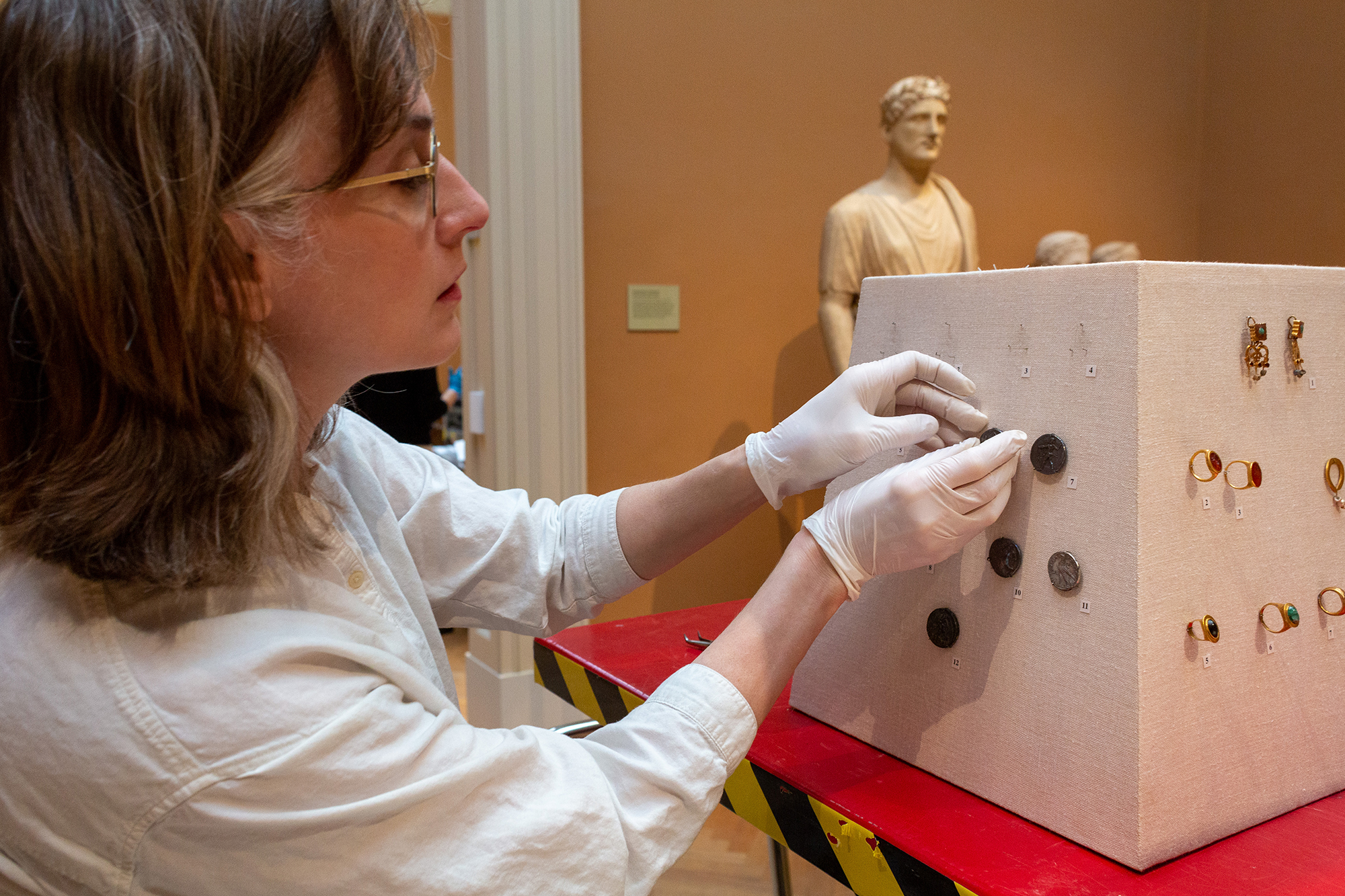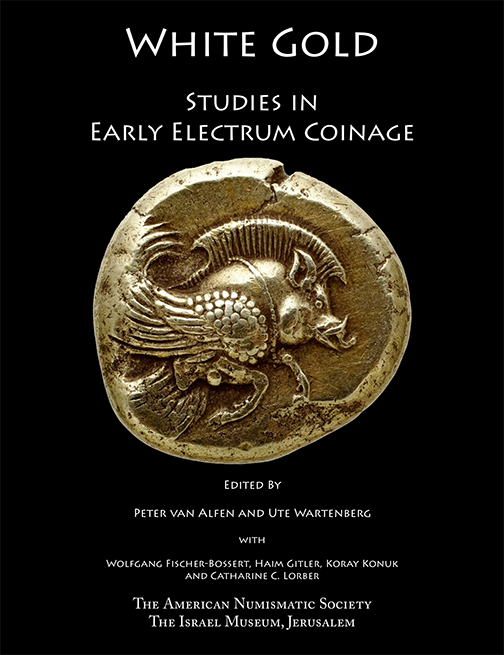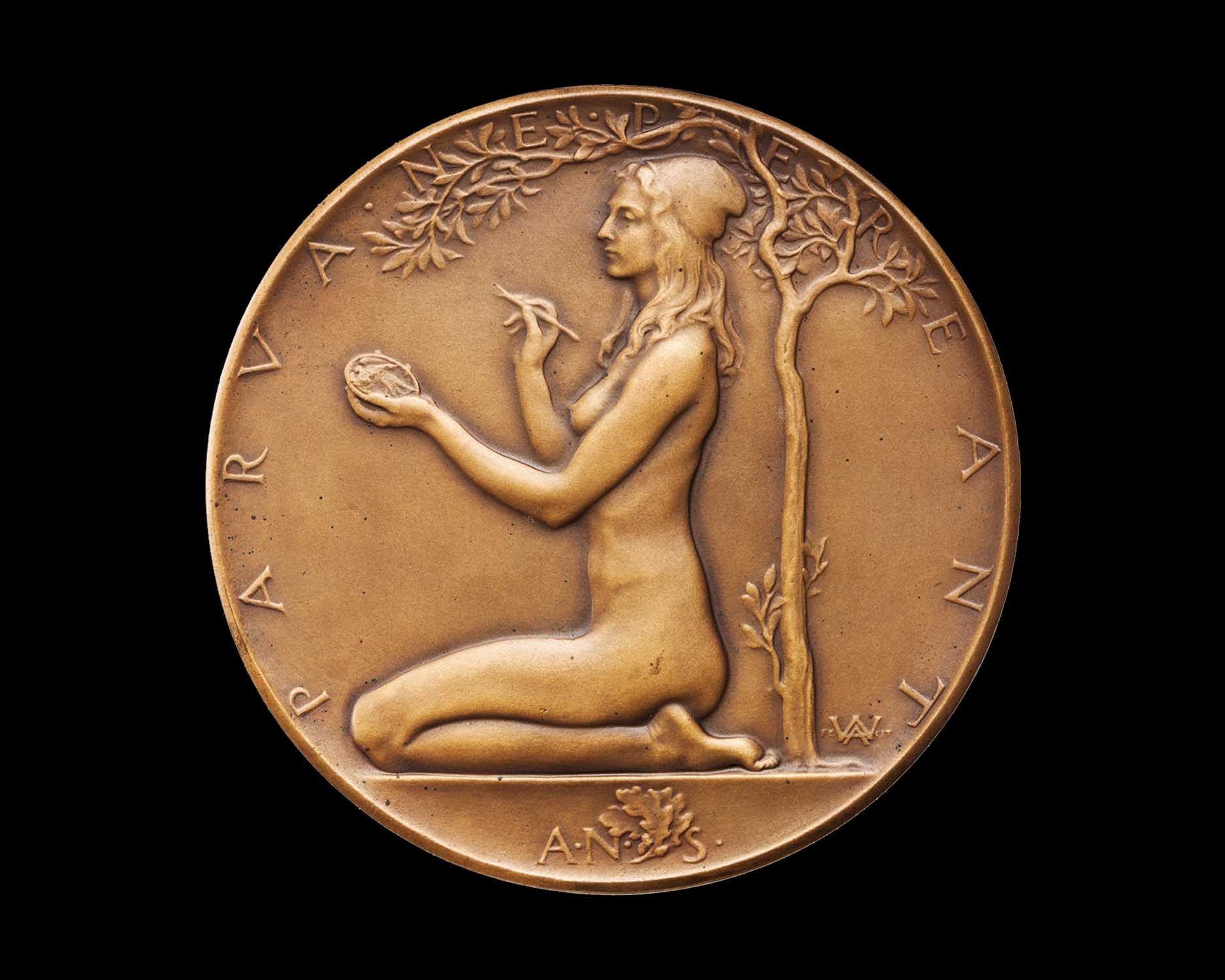Roman Medallions from the ANS on Exhibit at Major Museums
The American Numismatic Society is a principal lender of numismatic objects to museum exhibitions around the country and abroad. These distinctive pieces may serve to represent famous persons, major historical events, or important episodes in the development of civilizations. Among these pieces is a unique and marvelous gold medallion of the Roman Empire from the time of Diocletian, which is currently on long-term loan to the J. Paul Getty Museum as part of its permanent exhibition.

Diocletian (AD 284–305), originally a common soldier from Dalmatia, rose to the rank of general and in AD 284 was proclaimed emperor. He became one of the most important rulers of the later Roman Empire. He secured the imperial frontiers and restored order within the Empire. His economic reforms were aimed at overcoming the Empire’s monetary chaos of previous reigns, when prices rose unchecked. Diocletian’s famous Price Edict was issued to set maximum prices for goods and services throughout the Empire and prescribed the death penalty for violators. To manage the growing civil service, Diocletian restructured the Empire’s bureaucracy. The provinces were grouped into larger dioceses, each of which was directed by a vicarius. Finally, in AD 293, to oversee this enormous establishment, Diocletian created a Tetrarchy, a system of rule by four emperors. He divided the territory of the empire into two administrative halves, and appointed Maximian to rule with the title of Augustus in the west, while Diocletian ruled as Augustus in the east. Two junior emperors, Constantius Chlorus and Galerius Maximianus, were appointed as Caesars. The ANS medallion shows these four office-holders together and reflects the ideals of shared authority and partnership that lay at the heart of the tetrarchic system. The obverse bears the bearded and laureate busts of Diocletian Augustus (on the left) and Galerius Caesar (on the right), wearing the imperial mantle. The reverse shows the busts of Maximian Augustus (on the left) and Constantius Caesar (on the right). Due to the larger size and absence of an exergual line, the artist had the opportunity to engrave the portrait busts on a much larger scale than usual, with dramatic results.
Today the images of the tetrarchs can also be seen on the corner of St. Mark’s Basilica in Venice. It is a porphyry sculpture group, which was removed from Constantinople by Venetians when they plundered the city in 1204 during the Fourth Crusade.
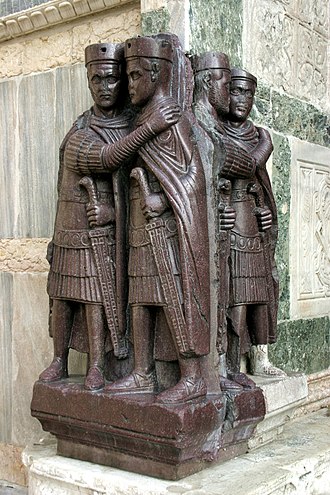
Another unique gold medallion (10 aurei) from the ANS is on long-term loan to the Metropolitan Museum of Art in New York, where it is on display in the Roman Gallery.
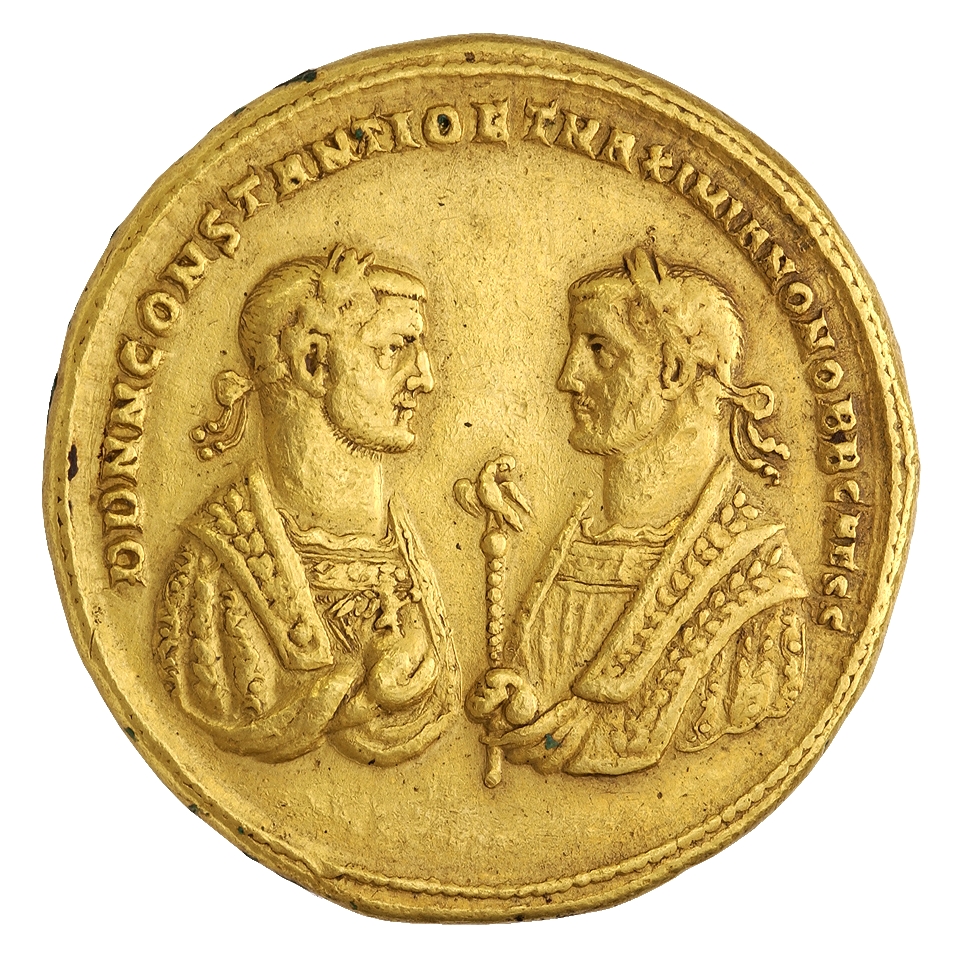
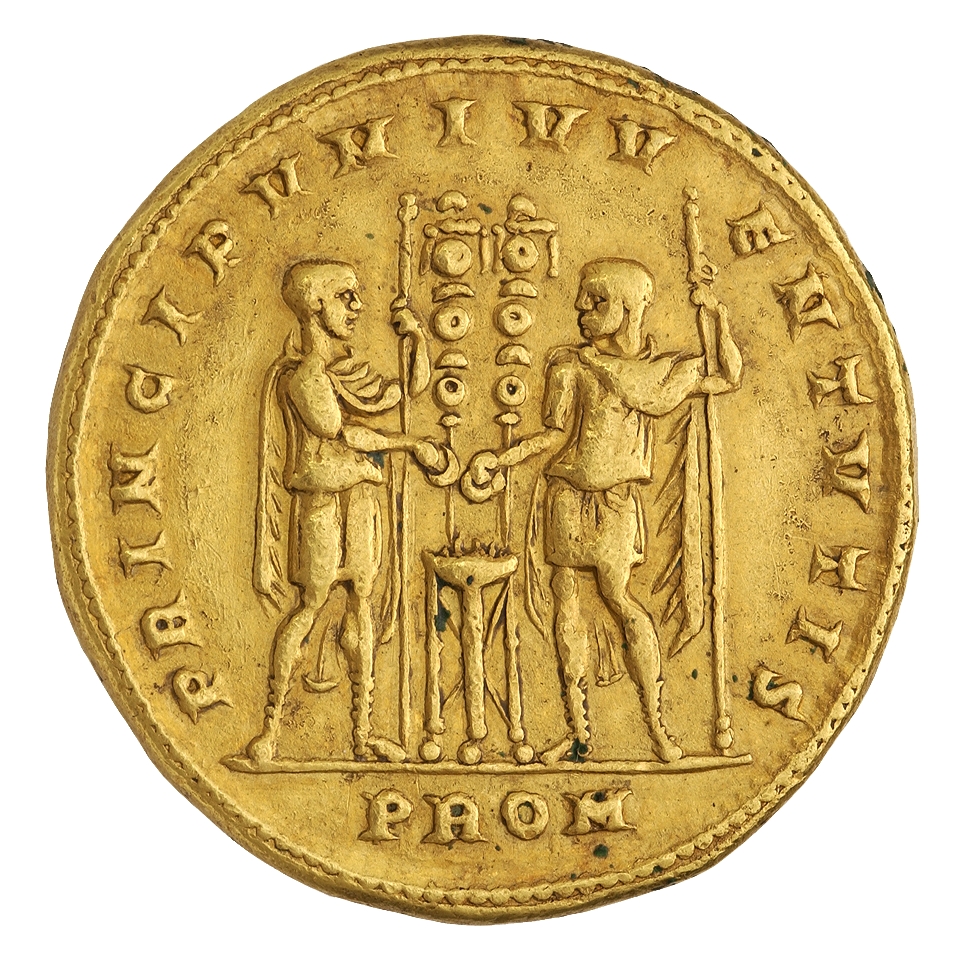
On the obverse it has half-length laureate portraits of Constantius Chlorus and Galerius Maximianus, wearing the imperial mantle. Constantius (on the left) holds a globe surmounted by a Victory his right hand, and Galerius (on the right) holds a scepter surmounted by an eagle; these are both emblems of sovereignty. The reverse bears two emperors standing in military dress with cloak, bareheaded, resting their left arms on long, upright scepters. They both hold a patera, with which they are pouring a libation upon a tripod-altar placed between them; in the central background there are two military standards. The exergue has the mint mark—prom (Percussa Romae, “struck at Rome”). The medallion was issued in AD 293, to commemorate the elevation of Constantius and Galerius to the rank of Caesar.
Both of these gold medallions from the ANS collection were found in 1922, along with over 400 Roman coins, in the famous Arras hoard in France, which closed around AD 315. These remarkable medallions, as well as many other ANS objects on display at the Getty Museum and the Metropolitan Museum of Art, are valuable ambassadors in the world’s leading art museums showing the importance of the ANS collection to a wider public for many years.


